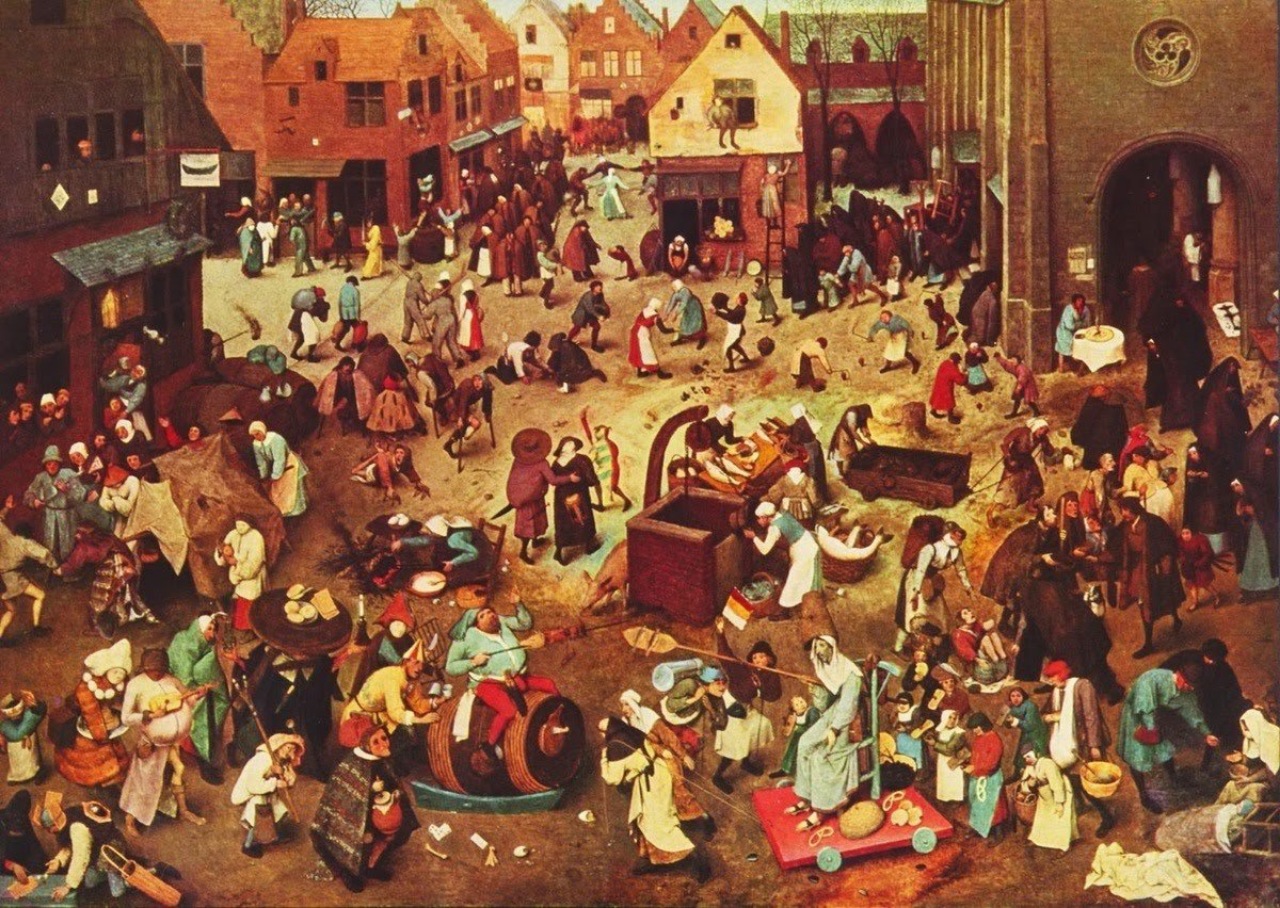The Phantom Time Hypothesis: reality or conspiracy? || La Hipótesis del Tiempo Fantasma: ¿realidad o conspiración? [ENG/ESP]
“Who controls the past controls the future. Who controls the present controls the past.”
George Orwell

Image edited with Picsart
Source
The Phantom Time Hypothesis: reality or conspiracy? || La Hipótesis del Tiempo Fantasma: ¿realidad o conspiración? [ENG/ESP]
.png)
What is time?
Time is usually defined as a physical magnitude with which we measure the duration or separation of events. Time allows us to order events in sequences, establishing a past, a future and a third set of events neither past nor future called "present".
Time is the same for everyone, however, the perception that each one of us may have of it at a given moment, may vary according to a number of circumstances, including, among others, our mood or the activities we may be doing, is that perhaps, do not you feel that time "flies " when you have fun, or on the contrary, passes very slowly when you get bored. Ask a young child what a year represents for him, and ask the same question to an elderly person; you would surely be surprised by the answers you would get from each one: for the child it is an enormous amount of time, considering that a year in the life of an infant represents a high percentage of the time he has lived; on the contrary, in the case of an elderly person, a year is just a tiny fraction of his life.
Currently, we are in the year 2022, however, for an increasingly growing group of people, we would actually be living in the year 1725, that is, there is an interval of 297 missing years corresponding to an interval of history that never existed.
.png)
The Phantom Time Hypothesis
A Conspiracy Theory, a recurring concept in current literature and cinema, particularly in suspense or science fiction, can be defined as the attempt to explain an event or chain of events, past or future, real or fictitious, fundamentally of a political, social, economic or historical nature, through the existence of a very powerful and extensive secret society or confraternity, of long standing and which usually pulls the strings of power with unconfessable purposes.
This term is also used in a derogatory manner to dismiss claims that are considered ill-conceived, paranoid, unsubstantiated, extravagant, irrational or unworthy of serious consideration.
The Phantom Time Hypothesis was put forward by historian Heribert Illig in 1991, and later expanded in 1995 by Dr. Hans-Ulrich Niemitzquien, both German nationals; who argue that the time interval from 614 to 911 AD never existed, i.e., a large part of the historical period known as the High Middle Ages would have been invented.
Illig argues that from dendrochronology, a scientific discipline that through the study of tree rings, allows dating or estimating the date of events; there would be no archaeological remains of that time, and that the history associated with that period was falsified or manipulated by a large conspiracy.

According to their arguments, supported by less radical studies that present doubts about the current periodization, the Holy Roman Emperor Otton II "The Red", Pope Silvester II, the one hundred thirty-ninth occupant of the throne of St. Peter, who was accused of an alleged pact he had made with the devil and of being inspired by the works of heretical authors, and perhaps the Byzantine Emperor Constantine VII; wanted to link the significant number of the year 1000 of the Christian era, modifying both the Julian calendar existing at that time, as the dating system, and rewriting part of the history of that "imagined era" for their own benefit, which included, besides being the rulers on the threshold of the first millennium of the arrival of the Messiah, the son of God; a hypothetical union of the Roman-Germanic and Byzantine empires to face together the overwhelming advance of Islam throughout the European territory.
The acceptance of this theory means that characters of the stature of Charlemagne (768-814), King of the Franks and Holy Roman-Germanic Emperor, and many others, did not exist, or were characters invented by the conspirators. Even some events, such as the Arab conquest of the Iberian Peninsula in 711, which lasted for eight centuries until the fall of Granada in 1492, the last bastion of the Arab invaders on Spanish soil, did not occur at the time and in the form in which history records them.
The author of this theory is based on the fact that the High Middle Ages, a period that begins in the 5th century and ends around the 9th and 10th centuries, is considered the darkest in the history of Europe, and there are hardly any documents, books or archaeological remains of the period. That is why he considers that the very few existing written references were invented in order to distort history.
All this macabre plan, hatched by the three dark characters mentioned above, could be carried out thanks to the very high illiteracy rate and the extreme poverty existing in the majority of the European population at that time. The rest, all those people linked to royalty and the church, could easily be manipulated to be accomplices in the fraud, so as not to lose the privileges or perks they enjoyed.
However, even though in those 297 years, almost three "lost" or "invented" centuries, there are no major advances in architecture, writing, painting and other arts of the European continent, even though there are abundant traces of older civilizations, such as the Romans, Greeks or Egyptians; on the contrary, in other parts of the world, mainly in the Middle and Far East, sufficiently documented events took place that would put an end to this absurd and far-fetched theory.
For example, in China there are valuable remains of testimonies of the study of astronomy during the Tang dynasty, corresponding to the period from 618 to 907, which reflect phenomena such as solar eclipses or the appearance of the Halley comet.
Likewise, the acceptance of this theory would mean leaving aside the appearance of the Islamic religion, originated in the year 622 during the escape of Mahoma to the city of Medina, with all that it brought with it from the cultural, artistic and political point of view, in addition to the enormous extension that it achieved between that year and 911, when the political structures of Islam had reached the gates of France, conquering vast areas of Asia and North Africa along the way.
As if the above were not enough, the Russian mathematician of Ukrainian origin Anatoly T. Fomenko, and some of his colleagues at Moscow State University, developed the theory of the New Chronology, where they carried out an extensive process of revisionism of history, which allows them to claim that the missing "gap" is not only 297 years, but extends for a thousand years, yes sir, you read that right, a thousand years, a millennium in the history of mankind that never existed.

.png)
Versión en Español
.png)
¿Qué es el tiempo?
El tiempo se define usualmente como una magnitud física con la que medimos la duración o la separación de los acontecimientos. El tiempo permite ordenar los eventos en secuencias, estableciendo un pasado, un futuro y un tercer conjunto de sucesos no pasados ni futuros llamados "presente".
El tiempo es igual para todos, sin embargo, la percepción que cada uno de nosotros pueda tener de éste en un momento dado, puede variar de acuerdo a un sinnúmero de circunstancias, que incluye, entre otros, nuestro estado anímico o las actividades que podamos estar realizando, es que acaso, ¿no sientes que el tiempo "vuela" cuando te diviertes?, o por el contrario, pasa con gran lentitud cuando te aburres. Pregúntale a un niño de poca edad que representa para él un año, y hazle la misma la pregunta a un anciano; seguramente te sorprenderían las respuestas que obtendrías de cada uno: para el niño es una cantidad enorme de tiempo, considerando que un año en la vida del infante representa un alto porcentaje del tiempo que ha vivido; por el contrario, en el caso del anciano, un año es apenas una minúscula fracción en su vida.
Actualmente, nos encontramos en el año 2022, sin embargo, para un grupo cada vez mas creciente de personas, en realidad estaríamos viviendo en el año 1725, es decir, existe un intervalo de 297 años perdidos correspondientes a un intervalo de la historia que nunca existió.
.png)
La Hipótesis del Tiempo Fantasma
Una Teoría Conspirativa, un concepto recurrente en la literatura y el cine actual, particularmente de suspenso o ciencia ficción; puede definirse como la tentativa de dar una explicación a un acontecimiento o una cadena de acontecimientos, pasados o futuros, reales o ficticios, fundamentalmente de carácter político, social, económico o histórico, a través de la existencia de una cofradía o sociedad secreta muy poderosa y extensa, de larga data y que usualmente mueve los hilos del poder con fines inconfesables.
También se emplea este término de manera despectiva para desestimar afirmaciones que se consideran mal concebidas, paranoicas, sin fundamento, extravagantes, irracionales o no merecedoras de consideración seria.
La Hipótesis del Tiempo Fantasma fue planteada por el historiador Heribert Illig en 1991, y posteriormente ampliada en 1995 por el doctor Hans-Ulrich Niemitzquien, ambos de nacionalidad alemana; que sostienen que el intervalo de tiempo que va desde el año 614 hasta el año 911 después de Cristo, nunca existió, es decir, una gran parte del período histórico conocido como Alta Edad Media habría sido inventado.
Illig sostiene que a partir de la dendrocronología, una disciplina científica que a través del estudio de los anillos de los árboles, permite datar o estimar la fecha de los acontecimientos; no habría restos arqueológicos de esa época, y que la historia asociada a ese periodo fue falsificada o manipulada por una gran conspiración.

De acuerdo a sus argumentos, apoyados en estudios menos radicales que presentan dudas sobre la periodización actual; el emperador del Sacro Imperio Romano-Germánico Otton II "el Rojo", el papa Silvestre II, centésimo trigésimo noveno ocupante del trono de San Pedro, y quien fue acusado de un presunto pacto que habría realizado con el diablo y de inspirarse en obras de autores herejes; y quizás, el emperador bizantino Constantino VII; quisieron vincular el significativo número del año 1000 de la era cristiana, modificando, tanto el calendario juliano existente en aquel momento, como el sistema de datación, y reescribiendo parte de la historia de esa “época imaginada” en su propio beneficio, que incluía, además de ser los regentes en el umbral del primer milenio de la llegada del Mesías, el hijo de Dios; una hipotética unión de los imperios romano-germánico y el bizantino para hacer frente común al avance arrollador del Islam por todo el territorio europeo.
La aceptación de esta teoría, significa que personajes de la talla de Carlomagno (768-814), rey de los Francos y Emperador del Sacro Imperio Romano Germánico, y muchos otros, no existieron, o fueron personajes inventados por los conspirantes. Incluso, algunos acontecimientos como la conquista árabe de la península Ibérica en el año 711, y la cual se prolongó por ocho siglos, hasta la caída de Granada en 1492, último bastión de los invasores árabes en suelo español; no ocurrieron en el momento y en la forma en la que la historia los registra.
El autor de esta teoría se basa en que la Alta Edad Media, período que se inicia en el Siglo V y finaliza alrededor de los Siglos IX y X, está considerada la más oscura de la historia de Europa, y apenas existen documentos, libros o restos arqueológicos de la época. Es por ello que considera que las poquísimas referencias escritas existentes fueron inventadas con la finalidad de tergiversar la historia.
Todo este macabro plan, urdido por los tres oscuros personajes anteriormente nombrados, se pudo llevar a cabo, gracias a la altísima tasa de analfabetismo y la extrema pobreza existente en la mayoría de la población europea de aquel entonces. El resto, todas aquellas personas vinculadas a la realeza y la iglesia, podían ser manipulados fácilmente para ser cómplices del fraude, con tal de no perder los privilegios o prebendas que gozaban.
Sin embargo, aún cuando en esos 297 años, casi tres siglos "perdidos" o "inventados", no existen mayores avances en la arquitectura, escritura, pintura y otras artes del continente europeo, aún cuando existen abundantes vestigios de civilizaciones más antiguas, como la de los romanos, griegos o egipcios; por el contrario, en otras partes del mundo, principalmente en el medio y el lejano oriente, se desarrollaron eventos suficientemente documentados que darían al traste con esta absurda y descabellada teoría.
Por ejemplo, en China quedan valiosos restos de testimonios del estudio de la astronomía durante la dinastía Tang, correspondientes al lapso de tiempo comprendido entre los años 618 a 907, en los que se reflejan fenómenos como los eclipses solares o la aparición del cometa Halley.
Asi mismo, la aceptación de esta teoría, supondría dejar de lado la aparición de la religión islámica, originada en el año 622 durante la huída de Mahoma a la ciudad de Medina, con todo lo que desde el punto de vista cultural, artístico y político trajo consigo, además de la enorme extensión que consiguiera entre el mencionado año y el 911, cuando las estructuras políticas del Islam habían llegado hasta las puertas de Francia, conquistando vastas zonas de Asia y el norte de África por el camino.
Por si fuese poco lo anterior, el matemático ruso de origen ucraniano Anatoly T. Fomenko, y algunos de sus colegas de la Universidad Estatal de Moscú, desarrollaron la teoría de la Nueva Cronología, donde llevaron a cabo un extenso proceso de revisionismo de la historia, lo que les permite afirmar que el "hueco" faltante, no es de tan sólo 297 años, sinó que se extiende por mil años, si señor, usted leyó bien, mil años, un milenio en la historia de la humanidad que nunca existió.

Vivimos en un Tiempo Fantasma
Fuentes Bibliográficas
- La Teoría del "Tiempo Fantasma",datos curiosos
- La hipótesis del Tiempo Fantasma. La teoría de Herbert Illig
- La hipótesis del tiempo fantasma, ¿qué pasó con esos 297 años?
- Heribert Illig y el tiempo fantasma


https://twitter.com/manuelgil64/status/1526660532144689153
The rewards earned on this comment will go directly to the person sharing the post on Twitter as long as they are registered with @poshtoken. Sign up at https://hiveposh.com.